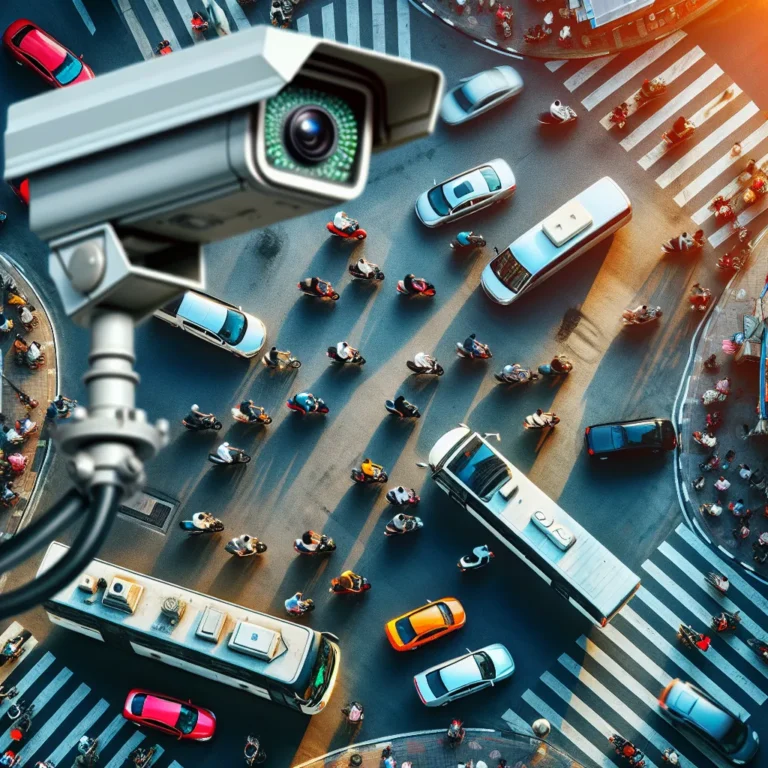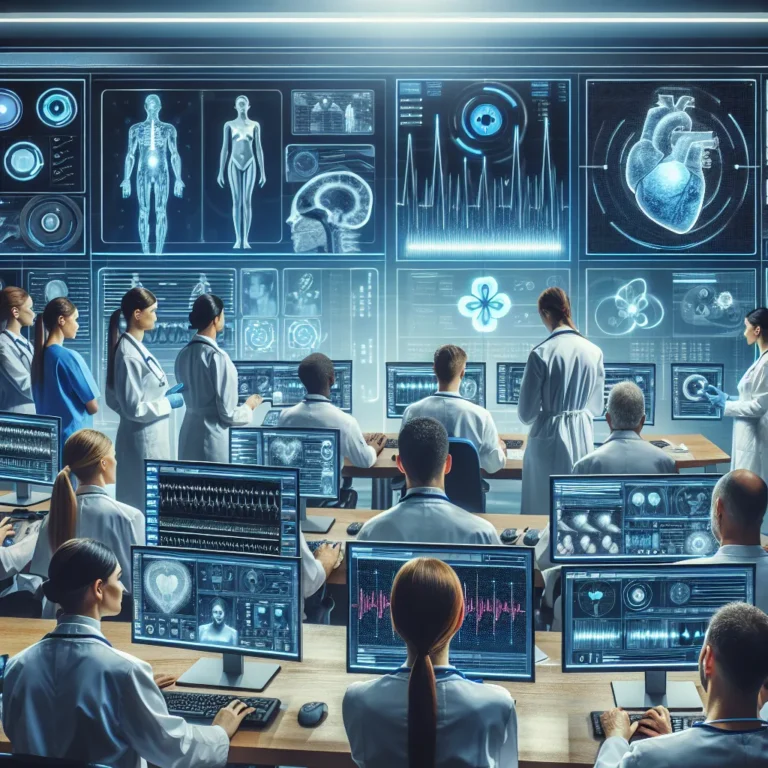
The article "The Evolution of Route Analysis in the Age of Surveillance" explores the significant impact of surveillance technology on the evolution of route analysis, showcasing how the integration of surveillance data has revolutionized the understanding of traffic patterns and road conditions. It discusses the capabilities of surveillance technology in collecting real-time data, enabling smarter route analysis and proactive decision-making. Additionally, the article highlights the development of predictive models to anticipate potential disruptions and the real-time adjustments made possible by leveraging surveillance data. The piece also raises concerns about privacy and the potential misuse of surveillance data in route analysis, emphasizing the need to balance the benefits of surveillance with the protection of individuals' privacy rights. This comprehensive overview serves as a compelling invitation for readers to delve into the full article, offering an in-depth understanding of the intersection between route analysis and surveillance technology.

The articles emphasize the significance of surveillance in route analysis, highlighting its vital role in transportation and logistics planning. The integration of advanced surveillance systems, such as CCTV cameras, traffic sensors, and GPS tracking, allows for real-time monitoring of traffic patterns, enabling analysts to optimize routes, enhance safety and security, and improve overall efficiency. Furthermore, the second article underscores how surveillance methods contribute to gaining valuable insights into route preferences, peak traffic hours, and congestion points, ultimately leading to informed decision-making in infrastructure planning, traffic management, and logistics operations. The integration of surveillance methods with route analysis software also opens up opportunities for predictive and adaptive strategies, reducing fuel consumption, emissions, and transportation costs, ultimately leading to more sustainable and efficient transportation systems. Both pieces emphasize the pivotal role of surveillance in shaping the future of transportation and logistics, making them essential reads for anyone involved in these industries.

The article delves into the intriguing history of covert operations, spanning from ancient espionage tactics to modern-day cyber warfare and the digital age of disinformation campaigns. It explores the pivotal role played by covert operations in shaping global affairs during the World Wars and the Cold War era, highlighting the extensive use of clandestine activities by major powers. The evolution of covert operations reflects a constant adaptation to technological advancements, geopolitical challenges, and the enduring significance of secrecy and deception in shaping the course of history. Moreover, the article also emphasizes the realm of secrecy and intrigue in uncovering the secrets of covert missions, showcasing the complex web of intelligence gathering, reconnaissance, and subterfuge that shapes the clandestine world. It encourages readers to explore the sophisticated world of espionage and covert action, offering valuable insights into the geopolitical landscape and the tactics involved in addressing national security challenges.

The evolution of surveillance methods has undergone a significant shift from analog to digital technologies, ushering in a new era of monitoring and security. Digital surveillance systems offer high-definition video quality, remote access, and advanced analytics, transforming the precision and effectiveness of surveillance. The integration of digital surveillance with internet protocol technology has enabled real-time monitoring from anywhere with internet connectivity, while also facilitating centralized control and holistic monitoring capabilities. Furthermore, the convergence of surveillance systems with emerging technologies like artificial intelligence and machine learning holds the promise of automating threat detection and ushering in an era of intelligent surveillance. The article delves into the transformative impact of digital surveillance, highlighting its potential to enhance operational resilience and adaptability in the face of dynamic challenges.

The articles address the ethical considerations in covert observation research, emphasizing the importance of informed consent, potential impact on subjects, and the ethical implications of deception. They highlight the dilemma of balancing privacy concerns with the acquisition of valuable knowledge through covert observation, as it offers insights into natural behavior but raises ethical red flags regarding privacy and autonomy. The authors stress the need for researchers to carefully assess the risks and benefits, minimize harm to subjects, and be transparent about their methods to ensure ethical conduct, and suggest exploring alternative methods to minimize ethical concerns while still obtaining valuable data. These insightful discussions encourage readers to explore the complexities of covert observation research and the ethical dilemmas it presents.

The article "Importance of Optimal Sensor Placement" highlights the critical role of strategic sensor placement in monitoring and surveillance systems, emphasizing the need to minimize blind spots and gaps for enhanced effectiveness. It delves into the significance of thorough analysis, advanced algorithms, and modeling techniques in achieving optimal sensor placement, leading to cost savings and simplified maintenance. Additionally, the article discusses the key factors that influence sensor coverage optimization, including the type of sensors, environmental conditions, layout of the area, and specific application requirements. It underscores the importance of understanding these factors for effective sensor coverage optimization. Furthermore, the article outlines best practices for maximizing sensor coverage, offering valuable insights for readers seeking to enhance the performance of their monitoring and surveillance systems.

This comprehensive article delves into the significance of mental strength in technical climbing, emphasizing the pivotal role it plays in a climber's success. It highlights the importance of managing fear, staying resilient in the face of challenges, and maintaining focus as key components of mental strength. The article outlines various techniques, such as deep breathing, visualization, and positive self-talk, that climbers can employ to control fear and anxiety and enhance their mental fortitude. Furthermore, it stresses the adaptability and problem-solving mindset that resilient climbers exhibit, along with the necessity of staying focused and present during climbs. Additionally, the second part of the article delves into overcoming fear and building confidence, emphasizing mental preparation, visualization, progressive exposure, positive self-talk, and goal-setting as crucial strategies for climbers to develop the requisite mental resilience. In conclusion, the article persuasively advocates for the crucial role of mental strength in technical climbing, enticing readers to delve into the full piece to gain a comprehensive understanding of this vital aspect of climbing performance.

The article discusses the significance of strategic sensor placement in maximizing data accuracy and improving data collection efficiency. It emphasizes the crucial role of strategic sensor deployment in ensuring comprehensive and highly accurate data collection, which is essential for valuable insights and informed decision-making. By carefully identifying key areas for sensor placement and addressing potential sources of interference, organizations can minimize redundant data collection and maximize critical data coverage. Moreover, strategic sensor placement enables the mitigation of issues such as signal degradation and environmental influences, thereby significantly improving the reliability of collected data. The article highlights that optimized sensor positioning contributes to cost-effectiveness, enhances the information quality for decision-making processes, and plays a crucial role in various fields, such as environmental monitoring, industrial applications, and smart infrastructure. Readers will gain valuable insights into the benefits of strategic sensor placement and its impact on data collection systems, making it an essential read for understanding the importance of optimal sensor positioning.

The article "Infrared Sensors: Revolutionizing Remote Sensing" explores the profound impact of infrared sensors on remote sensing applications across various industries. By detecting and measuring infrared light emitted by objects, these sensors enable non-intrusive and precise monitoring of temperature variations, motion detection, and gas analysis, significantly enhancing efficiency and accuracy in fields such as environmental monitoring, industrial automation, and medical diagnostics. Furthermore, the integration of infrared sensors in unmanned aerial vehicles and satellites has expanded our capacity for environmental surveillance and disaster response, contributing to a deeper understanding of the Earth's ecosystems. The article emphasizes the pivotal role of infrared sensors in shaping the future of remote sensing and expanding our knowledge of the world around us, making it a must-read for anyone interested in the latest advancements in sensor technology.

The article "Revolutionizing Healthcare: The Impact of Advanced Sensing Technologies" explores the transformative role of advanced sensing technologies in the healthcare industry, emphasizing the benefits of wearable devices, biosensors, and remote monitoring systems. It highlights how these innovations enable real-time monitoring, early detection of health issues, and proactive intervention, ultimately empowering individuals to take control of their health. The integration of data analytics and artificial intelligence with sensing technologies has revolutionized healthcare delivery, enabling personalized medicine and improved patient outcomes. Furthermore, the article touches upon the future of medical sensing, discussing the potential of wearables, implantable sensors, AI, and non-invasive monitoring in driving further advancements in healthcare. Overall, it provides a comprehensive overview of the monumental impact and promising future of advanced sensing technologies in healthcare, making a compelling case for readers to delve into the full article.









